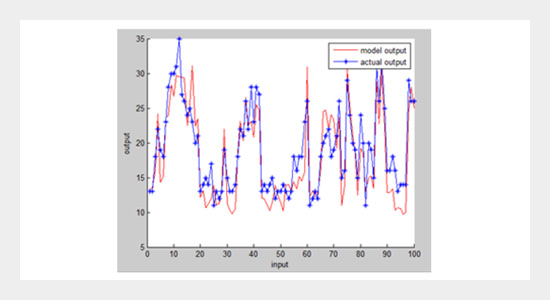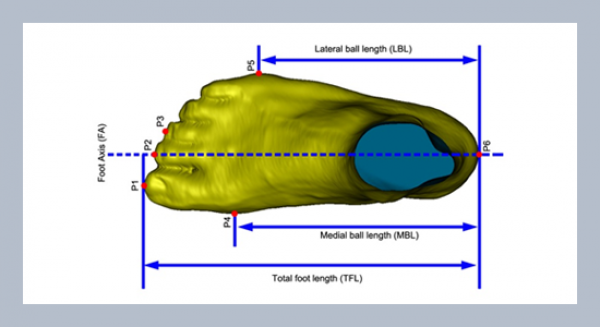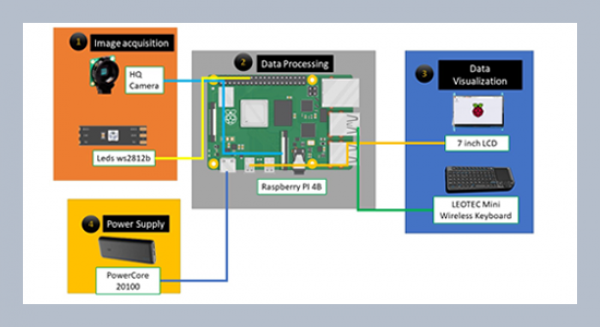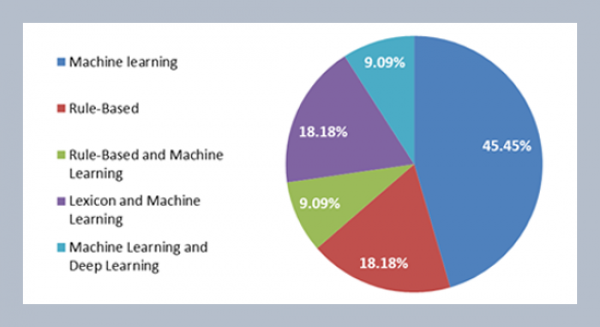REFERENCES
- [1] Ji, R., Yang, Y. P. and Zhang, W. D. Zhang, 2014. TS-fuzzy modeling based on
ε-insensitive smooth support vector regression. Intell. Fuzzy Syst, 24, 4:805–817.
- [2] Su, M. T., Chen, C. H. and Jian, C. 2011. A rule-based symbiotic modified differential evolution for self-organizing neuro-fuzzy systems. Soft Computing, 11, 8:4847–4858.
- [3] Gerardo, M. L. M. et al. 2014. Orthogonal-least-squares and backpropagation hybrid learning algorithm for interval A2-C1 singleton type-2 Takagi-Sugeno-Kang fuzzy logic systems. J. Hybrid Intell. Syst, 11, 2:125–135.
- [4] Hu, X. S., Li, E. and Yang, Y. 2017. Advanced machine learning approach for lithiumion battery state estimation in an electric vehicle. IEEE Trans. on Transportation Electrification, 2, 2:140-149.
- [5] Wang, L. X. 1992. Fuzzy systems are universal approximators, in Proc. IEEE Int. Conf. On Fuzzy Systems, San Diego, 1163-1169.
- [6] Buckley, J. J. 1993. Sugeno type controllers are universal controllers. Fuzzy Sets and Systems, 53:299-304.
- [7] Castro, J. L. 1995. Fuzzy logic controllers are universal approximators. IEEE Trans. On SMC, 25:629-635.
- [8] Lughofer, E. D. 2008, FLEXFIS: A Robust Incremental Learning Approach for Evolving Takagi–Sugeno Fuzzy Models [J]. IEEE Transactions on Fuzzy Systems, 16, 6:1393-1410.
- [9] Chen, C. C. and Wong, C. C. 2005. Significant fuzzy rules extraction by an SVD-QR-based approach. Syst., 36, 6: 597–622.
- [10] Efe, M. O. and Kaynak, O. 2001. A novel optimization procedure for the training of fuzzy inference systems by combining variable structure systems technique and Levenberg–Marquardt algorithm. Fuzzy Sets Syst, 122, 1:153–165.
- [11] Gerardoet, M. L. M. al., 2014, Orthogonal-least-squares and backpropagation hybrid learning algorithm for interval A2-C1 singleton type-2 Takagi-Sugeno-Kang fuzzy logic systems. J. Hybrid Intell. Syst, 11, 2:125–135.
- [12] Wang, L. X. 1999, Analysis and design of hierarchical fuzzy systems. IEEE Trans. Fuzzy Syst, 7, 5:617–624.
- [13] Yen, J. and Wang, L. 1999. Simplifying fuzzy rule-based models using orthogonal transformation methods. IEEE Transactions on Systems, Man and Cybernetics, 29, 1:13-24.
- [14] Jakubek, S., Hametner. C. and Keuth N. 2008. Total least squares in fuzzy system identification: an application to an industrial engine. Engineering Applications of Artificial Intelligence, 21, 8:1277-1288.
- [15] Destercke, S., Guillaume, S. and Charnomordic, B. 2007. Building an interpretable fuzzy rule base from data using orthogonal least squares: application to a depollution problem. Fuzzy Sets and Systems, 158, 18:2078-2094.
- [16] Szeidl, L. and Varlaki, P. 2009. HOSVD based canonical form for polytopic models of dynamic systems. Journal of Advanced Computational Intelligence and Intelligent Informatics, 13, 1:52- 60.
- [17] Tikk, D. and Baranyi, P. 2000. Comprehensive analysis of a new fuzzy rule interpolation method, IEEE Transactions on Fuzzy Systems, 8, 3:281-296.
- [18] Baranyi, P., Koczy, L. T. and Gedeon, T. D. 2004. A generalized concept for fuzzy rule interpolation. IEEE Transactions on Fuzzy Systems, 12, 6:820-832.
- [19] Ishibuchi, H., Nozaki, K., Yamamoto, N. and Tanaka, H. Selecting fuzzy if-then rules for classification problems using genetic algorithms. IEEE Transactions on Fuzzy Systems, 3, 3:260–270.
- [20] Cordón, O., Jesús, M. J., Herrera, F. and Lozano, M. MOGUL: a methodology to obtain genetic fuzzy rule-based systems under the iterative rule learning approach. International Journal of Intelligent Systems. 14, 11:1123–1153.
- [21] Eiben, E., Smith, J. E. 2003. Introduction to Evolutionary Computing. Springer-Verlag.
- [22] Cordón, and Herrera, F. 1997. A three-stage evolutionary process for learning descriptive and approximate fuzzy logic controller knowledge bases from examples. International Journal of Approximate Reasoning, 17, 4:369–407.
- [23] Gorzałczany, M. B. and Rudzinski, F. 2016. A multi-objective genetic optimization for fast, fuzzy rule-based credit clasfication with balanced accuracy and interpretability. Soft Comput, 40:206–220.
- [24] Antonelli, M., Ducange, P. and Marcelloni, F. 2014. A fast and efficient multiobjective evolutionary learning scheme for fuzzy rule-based classifiers, Sci, 283:36–54.
- [25] Juang,C. F., Jeng, T. L. and Chang, Y. C. 2016. An interpretable fuzzy system learned through online rule generation and multiobjective ACO with a mobile robot control application. IEEE Trans. Cybern, 46, 12 :2706–2718.
- [26] Dutu, L. C., Mauris, G. and Bolon, P. 2018. A Fast and Accurate Rule-Base Generation Method. IEEE Tran, On Fuzzy Systems, 26, 2:715-731.
- [27] Lughofer, K., and Kindermann, S. 2010. SparseFIS: Data-driven learning of fuzzy systems with sparse constraints. IEEE Trans. Fuzzy Syst, 18, 2:396–411.
- [28] Luo, M. N., Sun, F. and Liu, H. 2014. Hierarchical Structured Sparse Representation for T-S Fuzzy Systems Identification. IEEE Trans. On Fuzzy Systems, 21, 6:1032-1043.
- [29] Tropp, J. A. 2004, Greed is good: Algorithmic results for sparse approximation. IEEE Trans. Inf. Theory, 50, 10:2231–2242.
- [30] Tropp, A. and Gilbert, A. C. 2005. Signal recovery from partial information by orthogonal matching pursuit. unpublished manuscript.
- [31] Donoho, D. L. 2006. For most large underdetermined systems of linear equations, the minimal solution is also the sparsest solution. Pure Appl. Math, 59, 7:907–934.
- [32] Chen, S. S., Donoho, D. L. and Saunders, M. A. 1999. Atomic decomposition by basis pursuit. SIAM J. Sci Comp, 20, 1:33–61.
- [33] Donoho, D. L. and Tsaig, Y. 2008. Fast solution of ℓ1-norm minimization problems when the solution may be sparse. IEEE Trans. Inf. Theory, 54, 11:4789–4812.
- [34] Efron, B., Hastie, T., Johnstone, I. and Tibshirani, R. 2004. Least Angle Regression. The Annals of Statistics, 32, 2:407-45.















